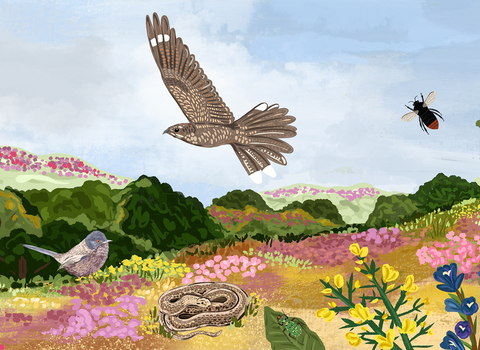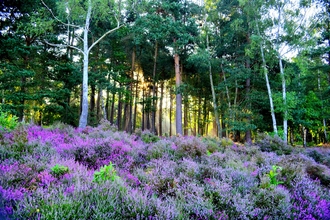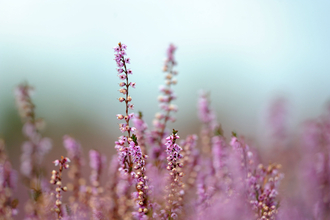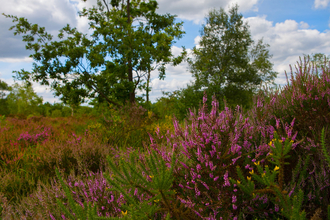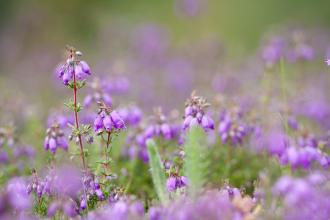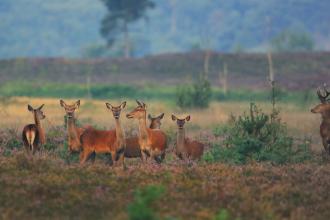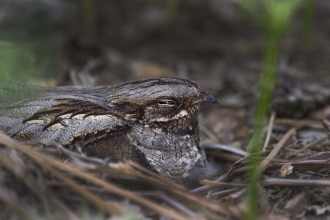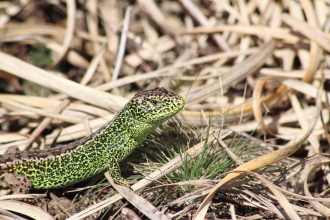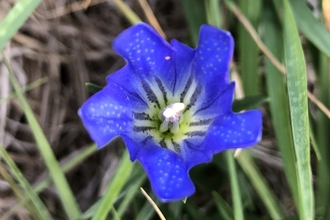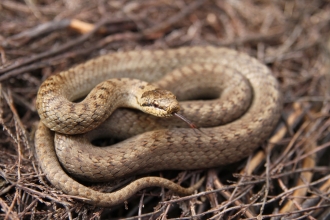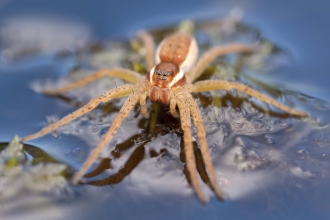What is heathland?
Once dismissed as wasteland, lowland heathland is now appreciated as the precious and unique habitat that it truly is. Located in the west of Surrey, our heathlands are some of the wildest landscapes in the county and are of national importance for wildlife.
Most heathlands are thought to date from the Bronze Age (some are 3000 years old) where were crafted by the activities of humans and grazing animals. Heathland usually occurs on sandy, free draining soils, on land where there are little nutrients in the soil for farming crops.
Your help will enable us to sustain and connect these vital habitats so they can survive long into the future.
Why is it important?
These biodiverse wildlife havens are rarer than rainforests and teeming with life. Much of the world's remaining heathland is found in the UK, and Surrey is a vital stronghold.
They shelter unique species such as the Sand Lizard, Smooth Snake and Heath Tiger Beetle which can’t be found anywhere else, and are also home to a huge range of insect species, as well as internationally protected ground nesting birds.
Butterflies such as the Silver-studded Blue and Grayling rely on the heathland ecosystem to breed and feed, whilst the Raft Spider, one of the UK's largest arachnids, uses the pools found on wet heath to hunt for small amphibians and fish.
The Eurasian Nightjar, Woodlark and Stonechat build their nests amongst the heather on the heathland floor, whilst Dartford Warblers can be seen defending their territories from spiky gorse bushes.
Here, only the heartiest of flora flourish. Those adapted to poor, acidic heathland soils thrive in heathland habitats. Some species resort to unusual means to gain nutrients: Carnivorous Round-leaved Sundews have glandular tentacles with sticky droplets on their leaves, while Lousewort parasitizes the roots of other plants to gain nutrients.
Habitat management
Without intervention, these precious landscapes would eventually turn into woodland. Through conservation grazing and habitat management using staff and volunteers we sustain these vital habitats, keeping this special landscape thriving.
Our conservation grazing efforts are instrumental in heathland habitat management, given that heathlands were historically sustained by the activities of large grazing animals both wild and domestic. Our conservation work also entails the regular removal of birch and pine as we create bare ground using scrapes. Not all trees are removed, as we also want to create habitat for heathland birds.
Surrey Wildlife Trust is on a long-term mission to join up our fragmented heathland territories. To do this, we need to purchase or safeguard more land, co-operate more closely with other landowners, and get better at identifying and mapping suitable habitats across the county through methods such as our Space4Nature project.
Conservation grazing
The continuation or reintroduction of grazing is vital for the survival of habitats such as heathlands and chalk grassland. Many of the flora and fauna that exist within these landscapes now rely on this type of management to survive. Through their grazing and trampling, they craft a diverse tapestry of terrain, nurturing delicate wildflowers, pollinators, and endangered species, from Nightjars to Sand Lizards.
Surrey's heathland sites
We manage many of Surrey's heathland sites for wildlife. See if you can spot a site near you and visit this fantastic habitat.
Important heathland species
Surrey's heathlands are brimming with life! Take a look at some of the special species they host.
- Silver-studded Blue (https://www.surreywildlifetrust.org/wildlife-explorer/invertebrates/butterflies/silver-studded-blue)
- Green Tiger Beetle (https://www.surreywildlifetrust.org/wildlife-explorer/invertebrates/beetles/green-tiger-beetle)
- Grayling (https://www.surreywildlifetrust.org/wildlife-explorer/invertebrates/butterflies/grayling)
- Bell heather (https://www.surreywildlifetrust.org/wildlife-explorer/wildflowers/bell-heather)
- Cross-leaved heath (https://www.surreywildlifetrust.org/wildlife-explorer/wildflowers/cross-leaved-heath)
- Adder (https://www.surreywildlifetrust.org/wildlife-explorer/reptiles/adder)
- Hobby (https://www.surreywildlifetrust.org/wildlife-explorer/birds/birds-prey/hobby)

